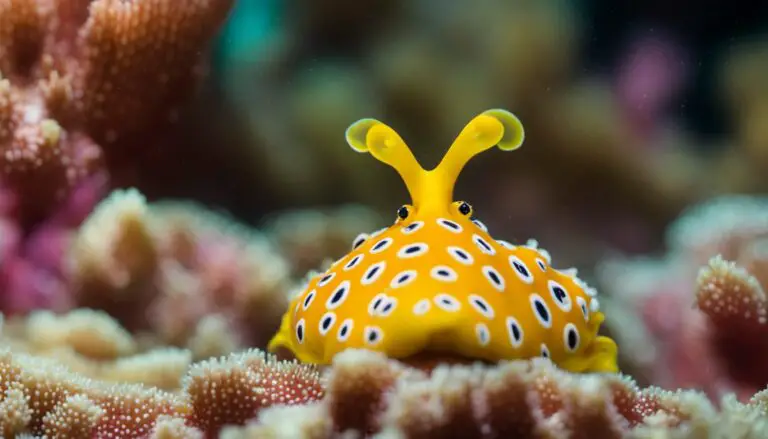Can Snails Drown?
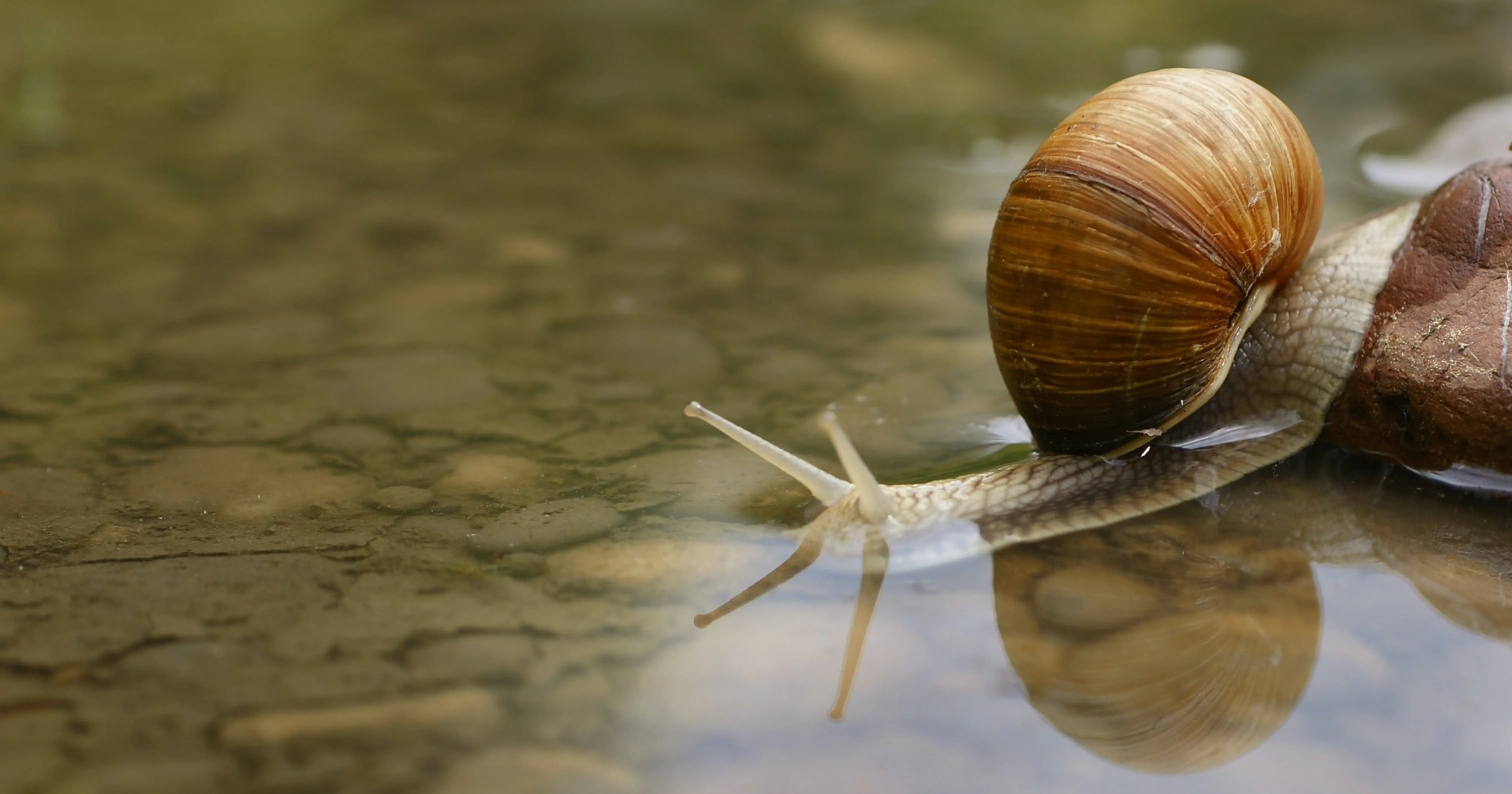
Snails, those small and slow-moving creatures, can be found in various habitats such as gardens, forests, and aquatic environments. You might have noticed them in your garden after a rain, sliding across the ground and looking for food. But when it comes to water, you may have wondered, “Can Snails Drown?”

Yes, snails can drown, but this statement primarily applies to land snails. These garden snails do not possess the ability to swim nor hold their breath underwater, putting them at risk of drowning when submerged for an extended period. On the other hand, sea and freshwater snails have adaptations that allow them to survive in water without drowning.
It is interesting to learn about the different types of snails and their survival abilities in various environments. Understanding the limitations and capabilities of land snails is essential for creating a suitable habitat for them and taking care of them responsibly.
Contents
Table of Contents
The Physiology of Snails
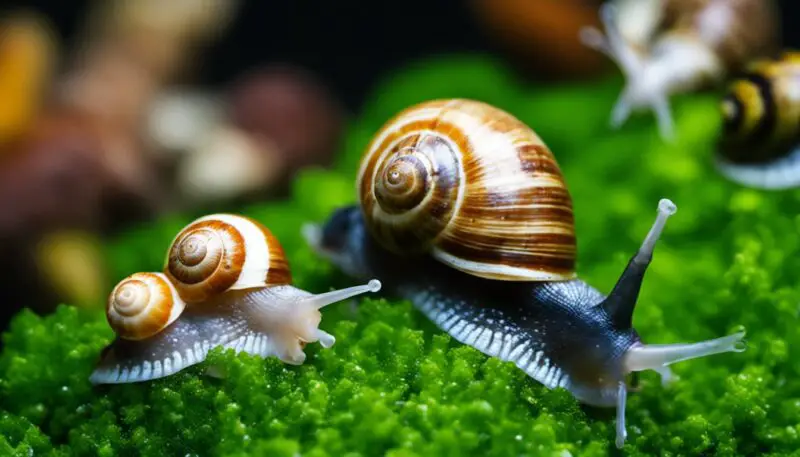
As you delve into the world of snails, you’ll find diverse species, ranging from water snails to land snails. While their habitats may differ, these creatures share common physiological traits that have enabled them to survive and thrive in various environments.
Body Structure and Senses
Regardless of their type – nerite snails, common whelk, or abalone – they possess a soft body protected by a hard shell. This shell serves as their primary line of defense against predators. It allows them to maintain a moist internal environment. Their body and shell also help them adjust to environmental changes.
A snail’s tentacles are sensory organs that allow it to navigate its surroundings and detect potential threats or food sources. In addition to vision, snails rely on their sense of touch and chemoreception to perceive their environment.
Respiration and Adaptation
One essential difference between water snails and land snails lies in their respiratory systems. Water snails, such as nerite snails, possess gills that enable them to extract oxygen from the aquatic environment. In contrast, like garden snails, land snails have lungs that allow them to breathe air from their surroundings.
Snails are adapted to their specific environments, so water snails cannot survive for extended periods outside water, whereas land snails can drown if submerged in water for too long. Garden snails, for example, typically drown within 24 hours when submerged.
Mucus Production and Movement
A crucial aspect of snail physiology is their mucus production. This slimy secretion serves multiple purposes, including providing lubrication for movement, protecting the body from damage and dehydration, and playing a role in reproduction. In snails, mucus production can account for up to 23% of their energy budget, highlighting its importance in their survival.
Regarding movement, snails rely on their muscular foot, which propels them forward by contracting and extending in a wave-like motion. This movement and the mucus they secrete allow them to overcome various terrains and obstacles.
With a better understanding of the physiology of snails, you can appreciate the intricacies of these seemingly simple creatures and the adaptations that have enabled them to survive in their environments, whether aquatic or terrestrial.
Understanding Snail Habitats

In this section, we will explore the different habitats of snails and their adaptations to these environments. Snails can be found in various habitats, including sea, freshwater, and land.
Sea Snail Habitats
As the name suggests, sea snails reside in saltwater environments such as oceans and seas. These aquatic creatures are adept swimmers and typically inhabit areas rich in rocks and other structures that protect them from predators. They can withstand a wide range of temperatures and adapt well to the salinity levels in their environment.
Freshwater Snail Habitats
Freshwater snails can be found in various aquatic habitats such as ponds, lakes, and rivers. Unlike their sea-dwelling counterparts, these snails thrive in fresh water, with some species even tolerating minor water temperature and quality fluctuations. Providing a proper aquarium setup with adequate rocks and hiding spots is essential for keeping these snails healthy and safe.
Land Snail Habitats
Land snails are unique creatures that prefer moist environments, often found in forests, gardens, and other similar habitats. They require a delicate balance of humidity and temperature to survive. As a land snail owner, you must ensure proper care by providing a suitable home with plenty of moist hiding spots, such as leaf litter and logs.
Land snails cannot breathe underwater and will quickly drown in water sources. As a result, it’s crucial to strike the right balance of moisture in their habitat, ensuring they don’t encounter large bodies of water that may cause them harm. It’s worth noting that despite their inability to survive long-term underwater, brief exposure to water can help maintain their required humidity levels.
In summary, understanding the different snail habitats is essential for providing the right conditions to help them flourish. Be it in salt water, fresh water, or on land; these peculiar creatures have unique adaptations that allow them to survive and thrive in their respective environments.
Snail Adaptation and Survival Techniques
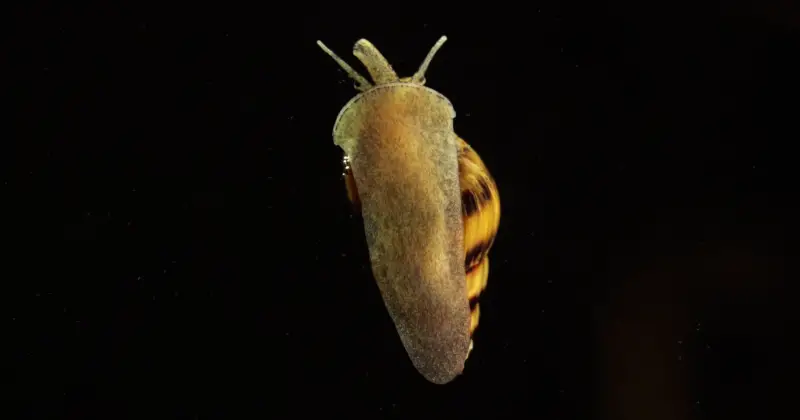
Snails have various adaptations that enable them to survive in different environments, such as land, fresh water, and salt water. Terrestrial snails have several survival mechanisms, such as their shell, mucus secretions, and estivation, which help them conserve moisture and protect themselves from predators.
When it comes to whether snails can drown, you’ll find that snails are equipped to survive underwater for extended periods. Aquatic snails have gills to extract oxygen from the water, allowing them to breathe efficiently underwater source.
Though they don’t have gills, terrestrial snails can survive underwater for extended periods. They can seal their shell opening with a mucus-like material known as an operculum, which enables them to hold their breath source. Moreover, snails’ slime is naturally hygroscopic, which attracts moisture instead of releasing it, helping them retain water and stay hydrated even when submerged.
In heavy rain or flooding cases, terrestrial snails are known to climb higher surfaces to avoid drowning, a vital behavioral adaptation source. On the other hand, if underwater for an extensive period without access to air, a terrestrial snail would have a limit on its ability to hold its breath, eventually leading to drowning.
To sum up, aquatic and terrestrial snails have a range of adaptations that enable them to survive underwater for extended timeframes. Most snails are adept at balancing their need for air, moisture, and hydration in various environments. While aquatic snails are well-equipped to live underwater permanently, terrestrial snails can also survive in this environment for considerable periods, notably due to their ability to hold their breath and moisture-attracting slime.
Can Snails swim on water in a Pond? See the result
Snails in Domestic Settings
This section will explore snails as pets and their management in gardens. Snails can be a fascinating and low-maintenance addition to your home or backyard.
Snails as Pets
Snails, particularly species such as mystery, apple, and ramshorn, can make unique and interesting pets for your aquarium or tank. These creatures require minimal care,** making them suitable for beginners** and seasoned aquarium enthusiasts alike.
Some popular aquarium snails to consider for your tank include:
- Mystery snails: Hardy and easy to care for. These snails are known for their attractive shells and wide array of colors.
- Apple snails: As their name suggests, they can grow quite large, making them an eye-catching addition to your aquarium.
- Ramshorn snails: Their spiraling shells can be a beautiful and functional addition to your tank, as they help keep it clean.
- Zebra snails: These attractive snails are known for their striped shells and can also contribute to controlling algae in your aquarium.
To care for your aquatic snails, you must provide suitable living conditions, including a clean tank with proper water parameters. Remember to feed them a balanced diet involving fresh vegetables, commercial snail pellets, or fish food.
Managing Snails in a Garden
Garden snails are common pests that can cause damage to your fruits and vegetables. Malaysian trumpet, rabbit, and assassin snails may invade your garden and devour tender plants, leaving a slimy trail behind. Control and manage these snails to protect your garden and maintain its beauty.
There are multiple ways to manage snails in your garden, including natural and chemical methods. You can use beer traps to capture and drown garden snails effectively. Fill shallow dishes with beer and place them near the plants you wish to protect. The snails will be attracted to the beer, fall in, and ultimately drown.
Another snail management option is introducing natural predators, such as assassin snails. These carnivorous snails can help control the snail population in your garden. Be cautious when using predator snails, as they may also threaten some beneficial snails or other invertebrates.
Lastly, you can opt for manual removal. Regularly inspect your garden and hand-pick the snails from your plants. This method is labor-intensive but can be effective if done consistently. Remember to wear gloves to protect your hands from the snail slime while performing this task.
By carefully managing snails in your home and garden, you can enjoy their unique charm as pets while also protecting your garden from these hungry pests.
Conclusion: Can Snails Drown
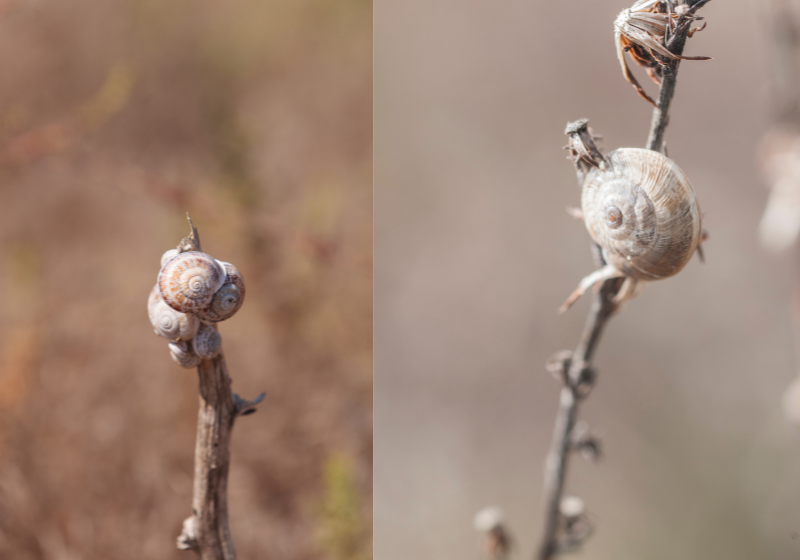
In summary, snails can drown, depending on the type and duration of submersion. Land snails, specifically pulmonate land snails, usually drown in less than 24 hours. However, operculate land snails can survive longer in water under specific conditions.
On the other hand, garden snails can survive in water as long as the water is clean and they have access to food and shelter. To ensure survival, it is essential to monitor the environment and conditions where snails live.
Always remember the ability of a snail to survive in water largely depends on the species and the surrounding conditions. By understanding the specific needs of the snail in question, you can help ensure its survival and well-being.
Frequently Asked Questions
How do snails breathe underwater?
Snails, depending on their species, have different ways to breathe underwater. Aquatic snails have gills that allow them to extract oxygen from the water, while land snails have lungs that extract oxygen from the air. When submerged, some land snails can still manage to breathe by trapping air within their shell, but it is not ideal for survival.
Do snails have lungs or gills?
The respiratory system of snails varies greatly between species. Aquatic snails have gills, specialized organs that extract oxygen directly from water. On the other hand, land snails usually have lungs, which allow them to extract oxygen from the air. Some land snails even have a combination of both lungs and gills, adapting to different environments.
Can land snails survive in water?
Land snails are not well-adapted to surviving in water. Although they need moisture to stay alive, they cannot survive being submerged in water for extended periods. Prolonged exposure to water could lead to drowning since land snails cannot swim and cannot extract oxygen from the water like aquatic snails.
How long can snails stay submerged?
The length of time that a snail can stay submerged varies between species and their environment. While aquatic snails are adapted to live underwater constantly, land snails can only survive briefly when submerged. Some land snails can survive for a few hours to a day, depending on their ability to trap air within their shell.
Do snails drown in beer traps?
Beer traps, commonly used to control slugs and snails in gardens, pose a risk of drowning these pests. The yeast in beer attracts snails and slugs, and when they fall into the trap, they become trapped and drown. This method can be an effective way to keep snails away from your plants but is not humane to deal with these creatures.
Can snails swim or float?
Snails cannot swim in the way that other animals do, as they lack the necessary limbs and muscles to propel themselves through the water. However, some aquatic snails have a unique ability to crawl along the water’s surface using their muscular foot, giving the appearance of floating or swimming. Land snails are incapable of this behavior and can neither swim nor float.

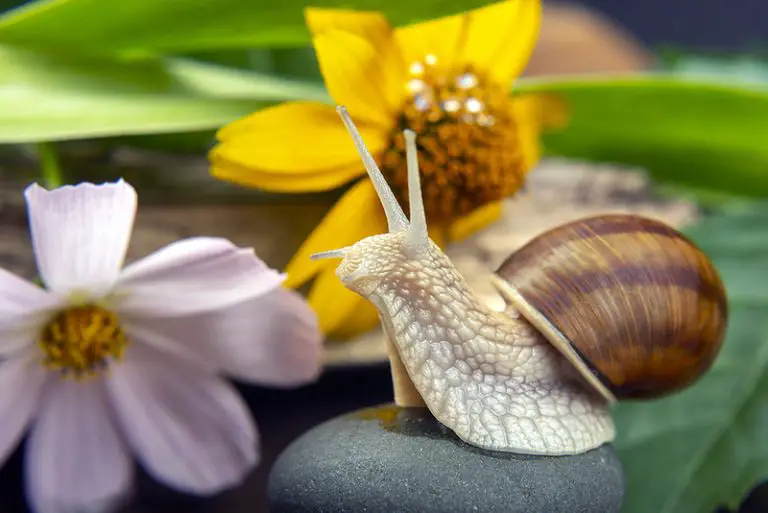
![Do Snails Eat Fish? [Complete Answer]](https://allourcreatures.com/wp-content/uploads/2021/11/snails-and-fish-768x576.jpg)


